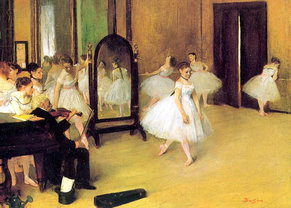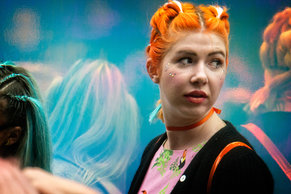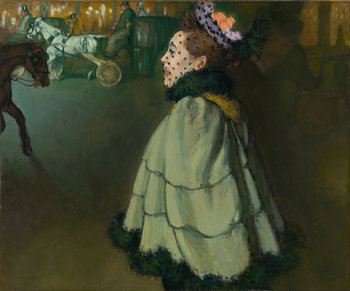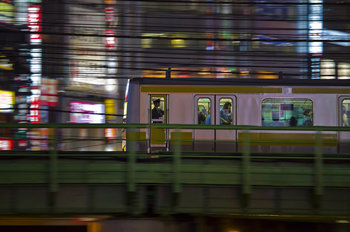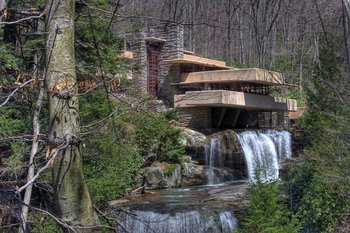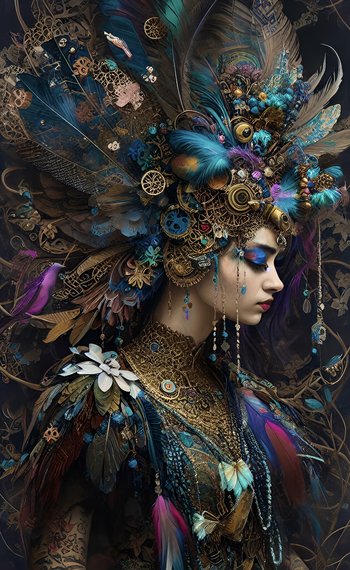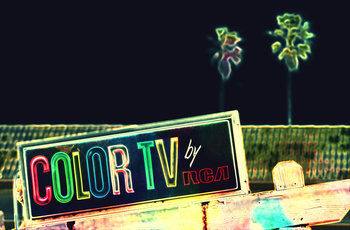
Red, Orange, Yellow
Red, orange and yellow are the longest wavelengths of visible light. These colors are perceived as warm due to their association with sunlight and fire. Red, orange and yellow are dramatic, loud colors associated with risk. As such, they are considered distracting and difficult to look at for long. Each of these colors have thousands of variations based on different wavelengths of light, shading with black, tinting with white and tinges of other colors.Red#ff0000
Orange#ffa500
Yellow#ffff00
Blue, Cyan, Green
Blue, cyan, green are middle wavelengths of light that are extremely common in nature due to their presence in the sky, bodies of water and vegetation. They are considered cool and calming.Blue#0000ff
Cyan#00ffff
Green#00ff00
Red, Purple, Pink
Pink is produced with red+white, red+blue or red+orange. Purple is generally red+blue. As such, both purple and pink are analogous to red and to each other.Red#ff0000
Purple#a020f0
Deep Pink#ff1493
Blue, Purple
Generally speaking, purple is a mix of red+blue and can be considered somewhat analogous to blue. Blues that are close to cyan or green look very different from purple. However, short wavelengths of blue light are close to violet and may appear somewhat purplish without any red.Blue#0000ff
Purple#a020f0
Green, Yellow
Greens and yellows originate with similar wavelengths of light such that they can be considered analogous.Green#00ff00
Yellow#ffff00
Brown, Orange
It is often claimed that brown is a dark shade of orange. Some browns originate this way. However, brown is a ubiquitous color similar to grey that often occurs when different colors are mixed. For example, browns can be produced from red+black+yellow or red+yellow+blue. Nevertheless, brown often has an orangish quality such that it can be considered analogous to orange.Brown#964b00
Orange#ffa500
Brown, Green
It is common for browns to have a greenish tinge. Brown and green are also commonly found together in nature such that they are perceived as analogous.Dark Brown#5c4033
Dark Green#006400
Black, Grey
Grey can be defined as a tint of black as all true greys can be produced from mixes of black and white. It should be noted that greys can also be produced with mixes of complementary colors such as orange and blue.Black#000000
Grey#808080
White, Grey
Just as grey can be defined as a tint of black, it can be defined as a shade of white.White#ffffff
Grey#808080
Pink, Violet
Many violet colors have a pinkish quality such that these colors are analogous.Deep Pink#ff1493
Dark Violet#9400d3
Purple, Violet
Violet is a spectral color that results from pure wavelengths of light in the range 380–450 nanometers. Purple is a mix of blue and red. These colors are considered similar. Many technologies and color models simulate violet with purple such that true violet isn't supported. This includes the RGB color model used by HTML/CSS such that the violet you see below isn't really violet.Purple#a020f0
Violet#9a0eea
| Overview: Analogous Color | ||
Type | ||
Function | ||
Definition (1) | Colors that have a similar hue. | |
Definition (2) | Sets of color that are perceived as similar. | |
Value | A way to navigate color choices with visualizations such as a color wheel that place similar hues side by side.Analogous colors are a common strategy for a color scheme. | |
Related Concepts | ||



